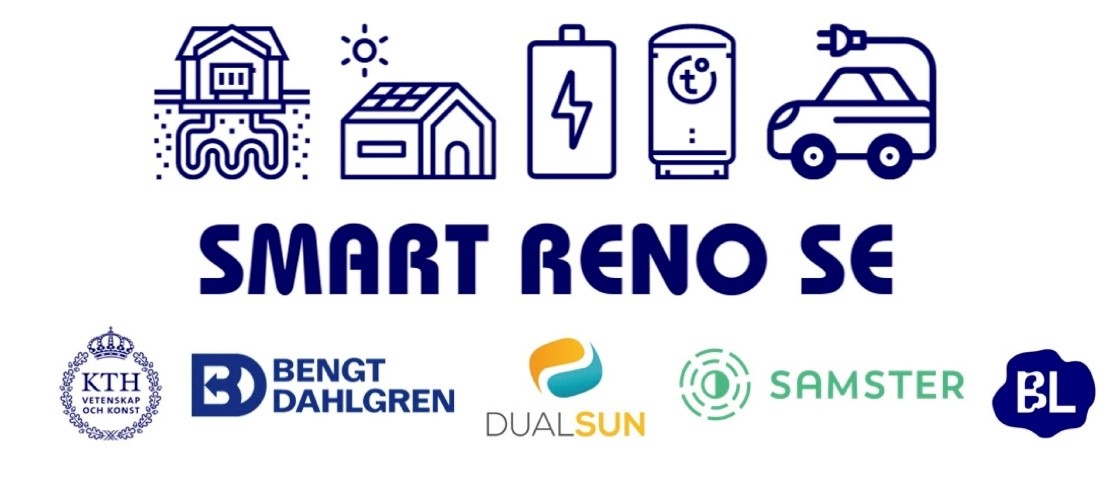Battery and Electric Vehicle Integration for Peak Power Reduction in Aging Ground Source Heat Pump Systems
Background
Ground source heat pump (GSHP) systems have been widely installed in Swedish single-family homes since the 1990s and early 2000s, providing efficient heating through the use of borehole heat exchangers. However, many of these systems now face performance challenges due to long-term thermal depletion of the ground and under-dimensioned borehole fields, especially when modern replacement heat pumps require higher extraction rates. In such cases, source temperatures decline during peak winter periods, forcing auxiliary electric heaters to activate and resulting in sharp peaks in electricity demand, increased operational costs, and reduced system reliability. These peaks are expected to become even more problematic under newly introduced capacity-based electricity tariffs and rising market price volatility.
Traditional renovation strategies focus on supply-side interventions such as drilling additional boreholes or integrating solar photovoltaic-thermal (PVT) collectors for ground regeneration. While effective, these measures involve high capital costs and physical constraints, particularly where land for drilling is limited or where roof layouts are not favorable for solar installations. In parallel, the growing use of batteries and electric vehicles (EVs) offers a renovation path focused on managing demand and shifting electrical load, rather than adding new supply. Controlled charging and discharging strategies have the potential to mitigate peak loads without physically altering the ground heat source, yet their role within as a renovation strategy for GSHP systems has not been deeply evaluated.
This thesis aims to investigate whether battery and EV-based flexibility (including V1G, V2H, and V2G operation), can effectively reduce peak power demand in residential GSHP systems during critical heating periods. Using realistic winter load profiles and electricity tariff structures, the study will assess the extent to which storage can suppress auxiliary heating peaks, manage the decline in operational efficiency, and offer a cost-effective alternative to traditional renovation interventions. This master’s thesis is part of the Smart Reno SE research project, funded by the Swedish Energy Agency, which aims to develop holistic renovation strategies for existing GSHP systems. Results are expected to contribute to renovation guidelines, journal publications, and decision-support frameworks for homeowners and industry stakeholders.

Thesis goal and structure
The primary objective is to evaluate the technical and economic potential of batteries and EV charging strategies to reduce peak electricity demand in aging GSHP systems.
This involves:
-
Conducting a literature review on peak load challenges in aging GSHP installations and current applications of storage-based flexibility.
-
Extend an existing GSHP system model in TRNSYS to include battery storage and EV smart charging strategies.
-
Perform systems simulations under different tariff and control scenarios, assessing impacts on auxiliary heater activation, electricity peaks, and backup energy use.
-
Perform techno-economic analysis of the investigated solutions.
Expected outcomes
This work is anticipated to culminate in a master's thesis report that will serve as the foundation for a scientific publication. The findings may be submitted to a peer-reviewed journal or presented at a conference. Therefore, this opportunity is particularly well-suited, but not limited to, students considering pursuing a PhD after completing their studies.
Proposed time schedule
The study is expected to start in January 2026 (wk. 3), and expected to be completed in June 2026 (wk. 23). Intermediate reports will be due at 1/3 and 2/3 intervals, or as needed.
How to apply
If you are interested in this project, please send your CV together with your transcript of records to the contact person Fransisco Beltrán . Prior completion of the Energy for Smart Cities course is considered an advantage. Joint applications from two students are highly encouraged, and in such cases the scope of the work will be adjusted accordingly.
